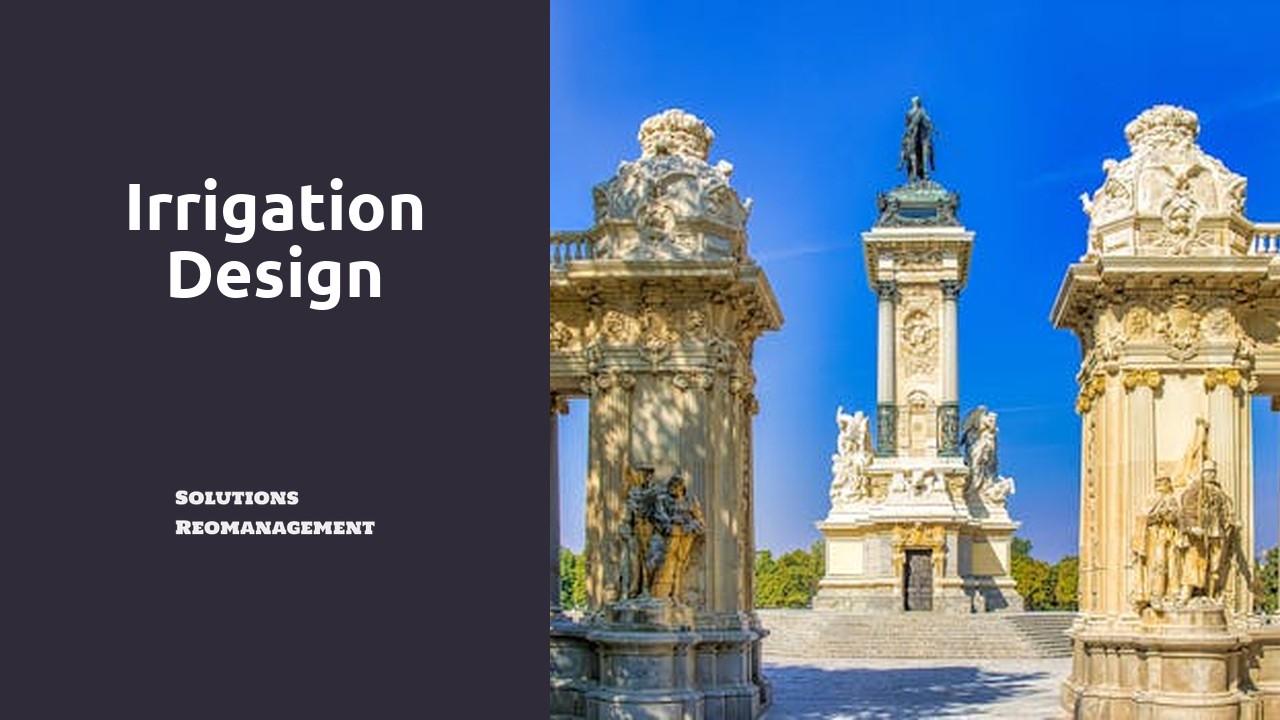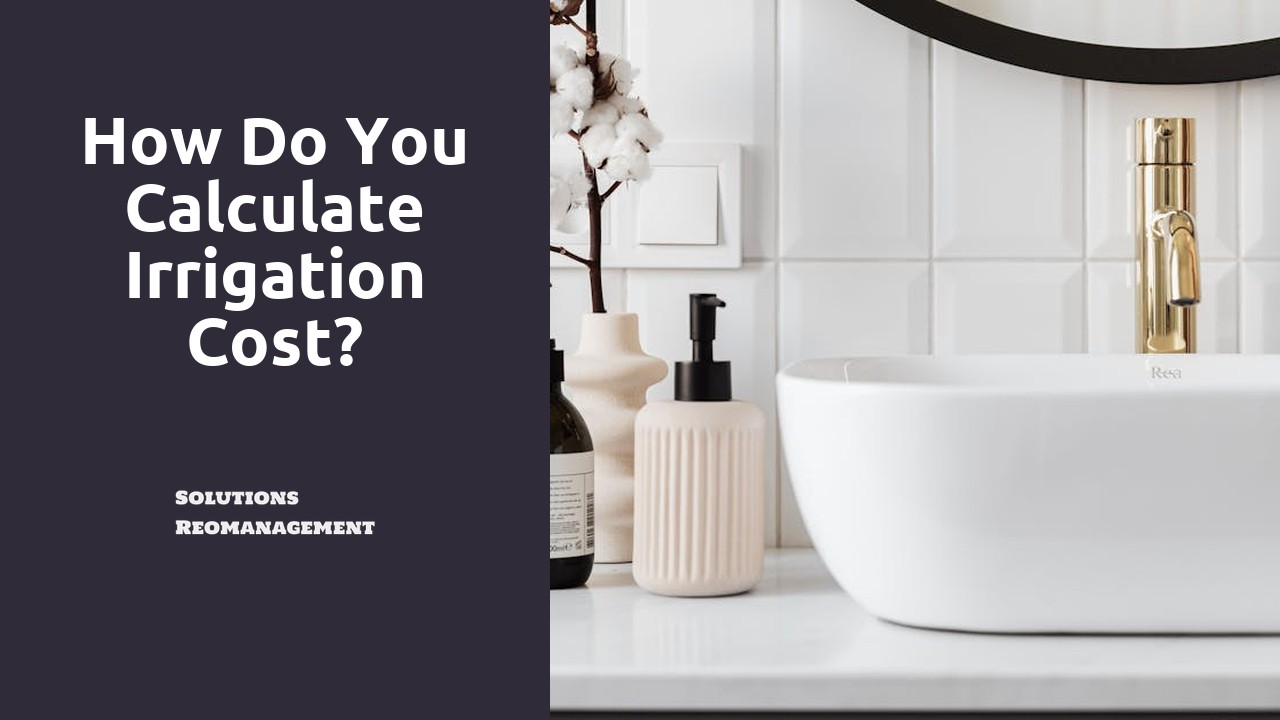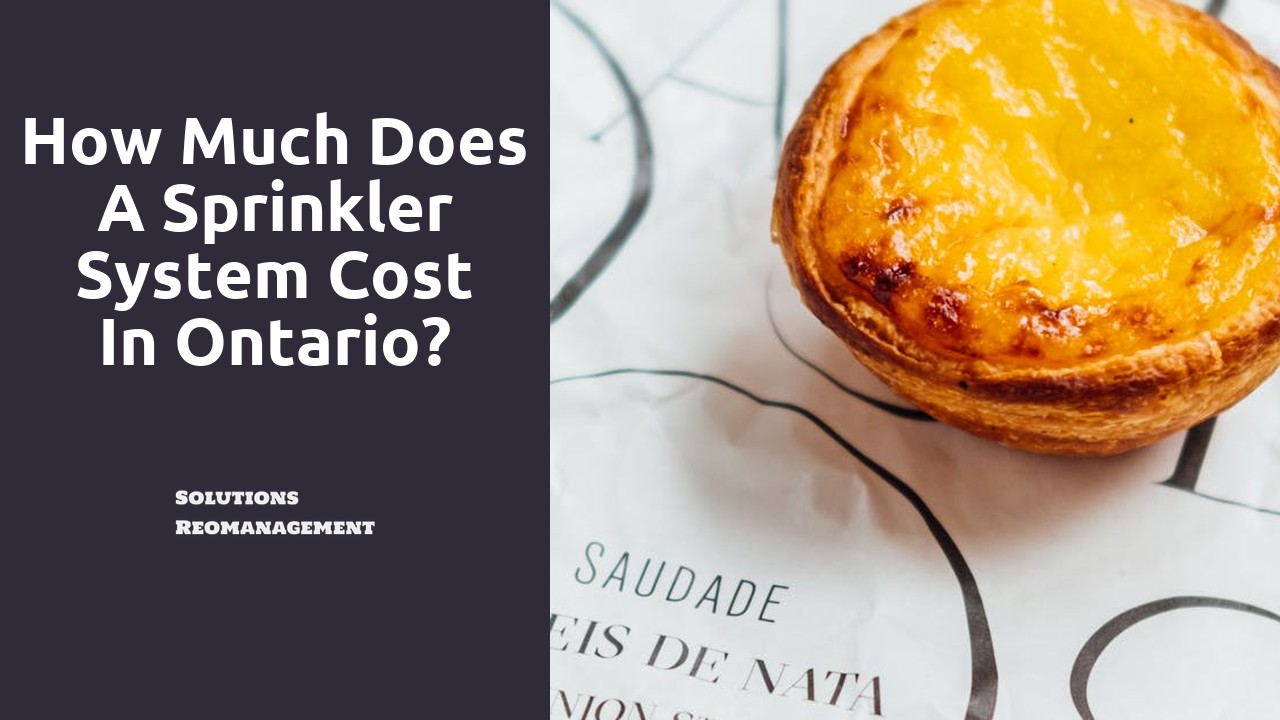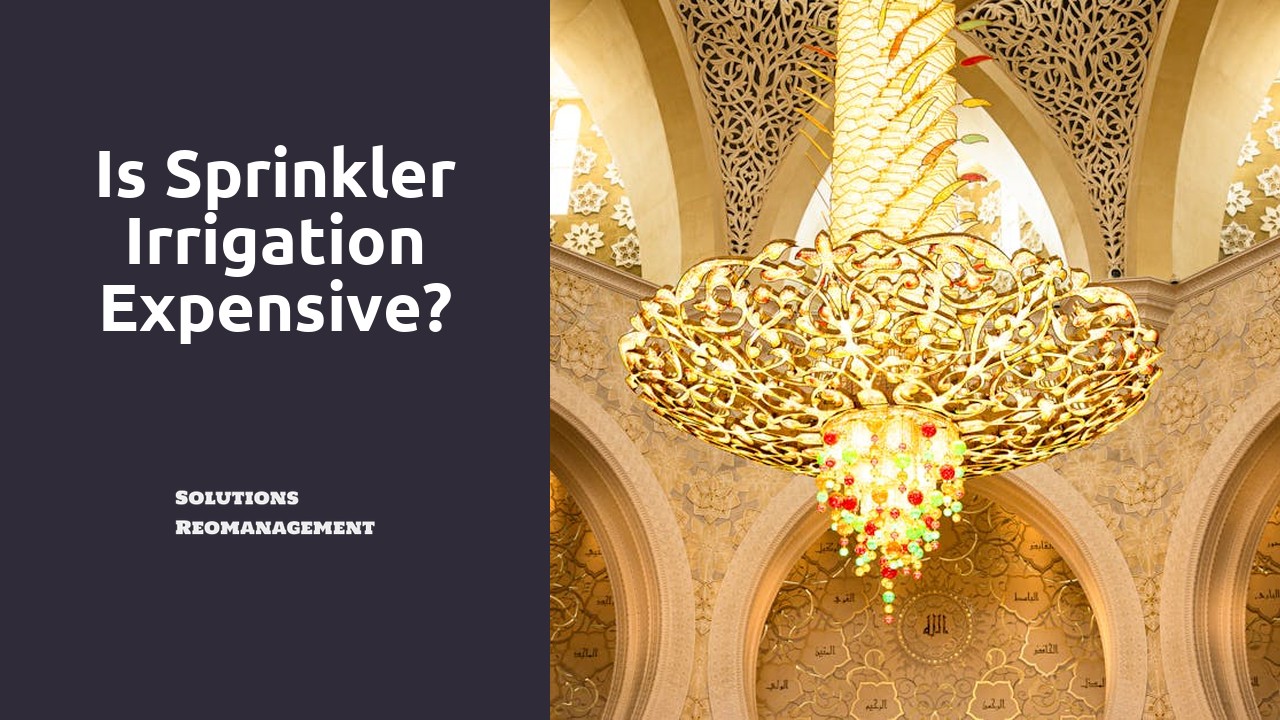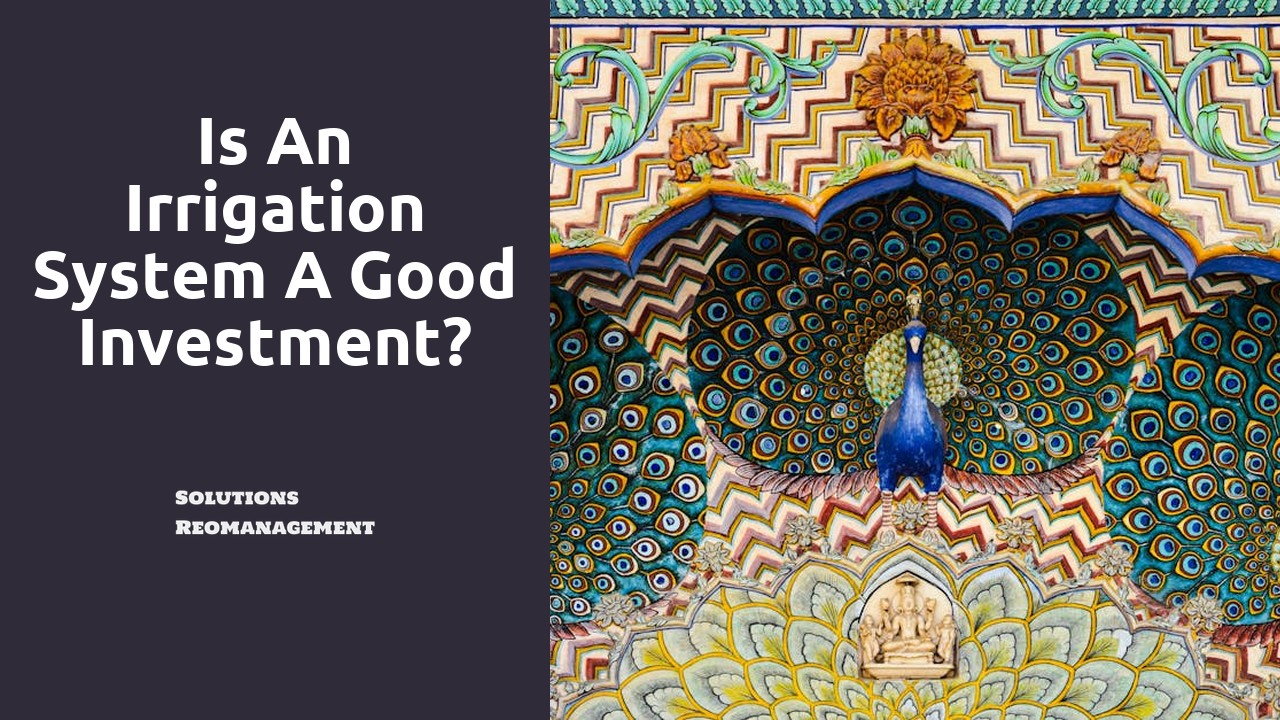
Table Of Contents
Exploring LongTerm Maintenance Expenses in Irrigation
Exploring long-term maintenance expenses in irrigation involves a detailed analysis of the costs associated with keeping irrigation systems operational and efficient over extended periods. In the context of Irrigation Design in Bowmanville, factors such as regular servicing, repairs, and parts replacement contribute significantly to the overall maintenance expenditure. It is essential for farmers and stakeholders in the agriculture sector to understand the financial implications of maintaining irrigation infrastructure to ensure sustainable and profitable farming practices in the long run.
Predicting future reparation costs for components of drip irrigation systems is crucial for budgeting and cost forecasting. By considering elements such as the lifespan of different components, frequency of replacements, and variability in pricing, stakeholders can develop accurate estimates for long-term maintenance expenses. In the context of Irrigation Design in Bowmanville, predicting reparation costs for drip irrigation components necessitates a proactive approach to maintenance planning to avoid unexpected financial burdens and operational disruptions.
Predicting Reparation Costs for Drip Irrigation Components
Drip irrigation systems are an efficient method widely used in modern agriculture, offering precise water delivery directly to the roots of plants. Despite their effectiveness, these systems may require periodic maintenance and repairs to ensure optimal functionality. When considering the reparation costs for drip irrigation components, factors such as the quality of materials used, system complexity, and frequency of inspections play a crucial role. In Irrigation Design in Bowmanville, a thorough evaluation of the anticipated expenses associated with maintaining drip irrigation components is essential to maximize the system's longevity and performance.
The prediction of reparation costs for drip irrigation components involves a detailed analysis of potential vulnerabilities within the system. Regular assessments of pipes, emitters, filters, and control mechanisms are imperative in identifying possible issues that may arise over time. By estimating the costs of replacing damaged components or upgrading outdated parts, farmers and agricultural professionals in the context of Irrigation Design in Bowmanville can proactively budget for future maintenance expenses, enhancing the sustainability and cost-effectiveness of their irrigation practices.
CostBenefit Analysis of Sustainable Irrigation Practices
Sustainable irrigation practices play a crucial role in ensuring the efficient use of water resources while maintaining agricultural productivity. A cost-benefit analysis allows stakeholders to evaluate the financial implications of implementing such practices. Within the context of Irrigation Design in Kawartha Lakes, the analysis considers both the initial investment required to adopt sustainable irrigation technologies and the long-term benefits accrued from reduced water usage and increased crop yields.
By assessing the financial gains of implementing smart irrigation technologies, stakeholders can make informed decisions regarding resource allocation and investment in sustainable practices. The cost-benefit analysis provides a comprehensive overview of the potential economic benefits that can be derived from adopting these technologies, while also considering the associated costs of maintenance and operation. This analysis aids in understanding the long-term viability and financial implications of sustainable irrigation practices within the agricultural sector.
Assessing the Financial Gains of Implementing Smart Irrigation Technologies
Smart irrigation technologies have gained significant traction in the agricultural sector due to their ability to enhance water efficiency and reduce operational costs. By integrating advanced sensors, weather forecasting data, and automated controls, these systems optimize water distribution based on real-time conditions, leading to more precise irrigation practices. The adoption of such technologies not only minimizes water wastage but also contributes to improved crop yields and quality, ultimately translating into substantial financial gains for farmers implementing them. Irrigation Design in Maple, for instance, leverages smart technologies to adjust irrigation schedules, monitor soil moisture levels, and detect potential leakages, resulting in enhanced crop production and resource savings.
Moreover, the implementation of smart irrigation technologies offers farmers the opportunity to streamline their operational processes and foster sustainable agricultural practices. By reducing water consumption and energy usage through precise irrigation scheduling and targeted water delivery, farmers can mitigate the impact of water scarcity and environmental degradation in the long run. The financial benefits of these technologies extend beyond cost savings in water and energy bills to encompass enhanced crop resilience, improved soil health, and overall farm profitability. As a result, incorporating Smart Irrigation Design in Maple can not only optimize resource management but also contribute to the economic viability and ecological sustainability of agricultural operations.
Understanding the Lifecycle Costs of Agricultural Irrigation
A crucial aspect of managing agricultural irrigation systems effectively is understanding the lifecycle costs involved. These costs go beyond the initial investment and encompass expenses related to regular maintenance, repairs, and upgrades. For farmers and agricultural businesses in regions like Bowmanville, Ontario, comprehending these ongoing expenses is essential for making informed decisions about irrigation practices.
"Irrigation Design in Bowmanville" plays a significant role in determining the long-term costs associated with agricultural irrigation. Factors such as the type of irrigation system, water source, crop types, and local climate conditions all influence the total expenses incurred over the lifecycle of the system. By assessing these costs early on and incorporating them into budgeting and planning processes, farmers can optimize their irrigation strategies for sustainable and cost-effective agricultural practices.
Estimating the Total Expenses of Maintaining Surface Irrigation Infrastructure
Surface irrigation infrastructure encompasses a range of components that require ongoing maintenance to ensure optimal functionality. Costs associated with maintaining these systems can vary depending on factors such as system size, complexity, and age. When estimating the total expenses of maintaining surface irrigation infrastructure, it is crucial to account for routine upkeep, repair work, and potential upgrades to enhance efficiency and longevity. By conducting regular assessments and implementing proactive maintenance strategies, farmers can minimize unexpected costs and prolong the lifespan of their irrigation systems.
Investing in the maintenance of surface irrigation infrastructure is essential for sustaining agricultural productivity and maximizing resource efficiency. As farmers navigate the complexities of Irrigation Design in Maple, they must consider the long-term financial implications of upkeep and repairs. By calculating the total expenses associated with maintaining surface irrigation infrastructure, farmers can develop informed budgets and prioritize investment in sustainable practices. By proactively managing maintenance costs and exploring innovative solutions, farmers can optimize the performance of their irrigation systems while minimizing unnecessary expenses.
FAQS
What are the long-term maintenance expenses associated with irrigation systems?
Long-term maintenance expenses for irrigation systems include costs for repairs, replacements, upgrades, and regular upkeep to ensure optimal functionality.
How can I predict reparation costs for drip irrigation components?
Reparation costs for drip irrigation components can be predicted by considering factors such as the type of components, frequency of use, manufacturer's recommendations, and potential wear and tear.
Are sustainable irrigation practices cost-effective in the long run?
Yes, sustainable irrigation practices can be cost-effective in the long run as they often lead to reduced water usage, lower energy consumption, and minimized maintenance expenses compared to traditional irrigation methods.
What are the financial gains associated with implementing smart irrigation technologies?
Implementing smart irrigation technologies can result in financial gains through improved water efficiency, reduced operating costs, increased crop yields, and potential incentives or rebates for utilizing advanced irrigation systems.
How can I estimate the total expenses of maintaining surface irrigation infrastructure?
The total expenses of maintaining surface irrigation infrastructure can be estimated by considering costs related to equipment maintenance, water usage, labor, repairs, upgrades, and any additional expenses associated with the specific type of surface irrigation system being utilized.
